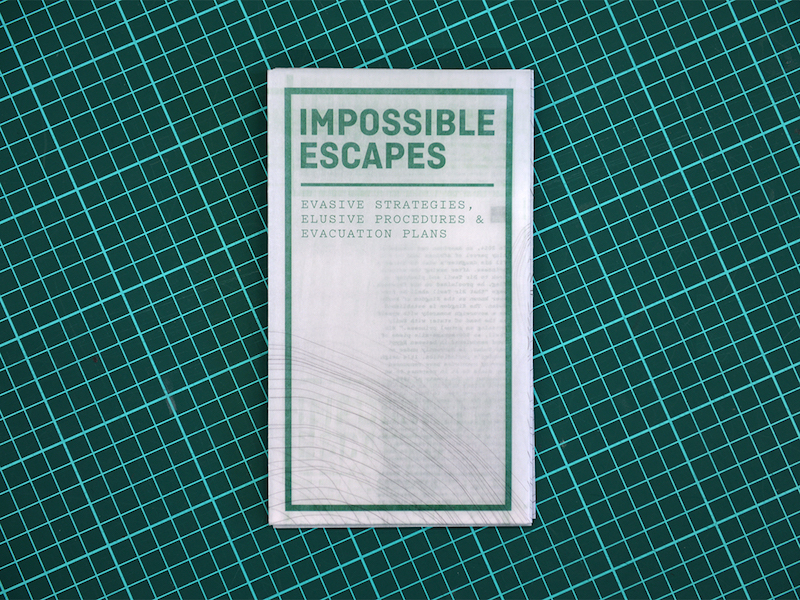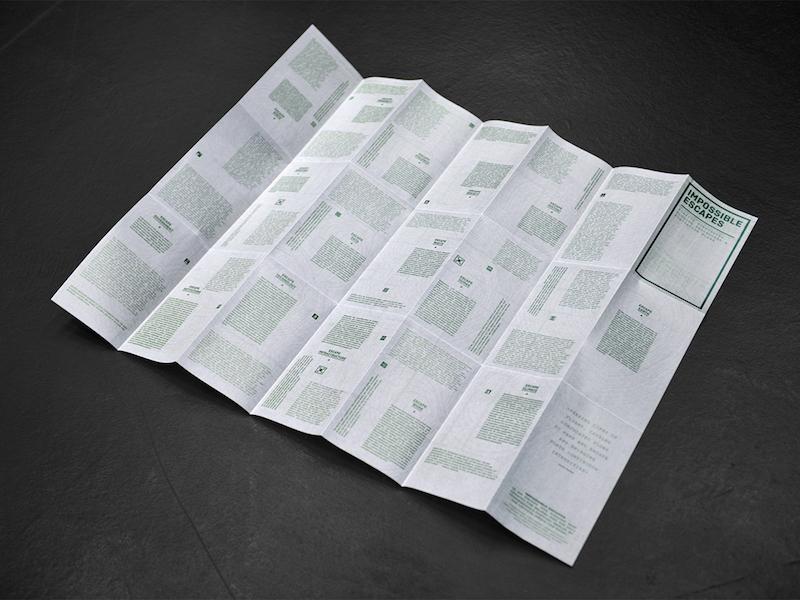Turtles All the Way Down—Or, Escape from Infrastructure
Turtles All the Way Down—Or, Escape from Infrastructure
“We shouldn’t think, as McLuhan once quipped, that just because we talk about something we are in favor of it,” Critical Media Lab’s Jamie Allen answers, when I ask him if the exhaustive use of the term “infrastructure” has rendered its meaning, well, elusive. “Infrastructure as a concept can be a truly problematic Shibboleth,” he says, “leading to fetishization, a kind of messianism, or even further obfuscation.” But maybe, he suggests, we need to see persistent concepts like infrastructure “through their tougher times, not just abandon them.”
I spent the first conference day of transmediale 2017 keeping an infrastructure “score sheet.” This is in part due a certain ambivalence towards the term that I developed after spending part of my editorial life last year working on a book about the subject, but also because as festival-goer, the myriad ways in which the term was used throughout the program fascinated and obfuscated in equal measure. Buoyed by the program text for the first of the conference’s “Middle Sessions,” the Elemental Middle—which sought not rely on “the worn-out critical mechanisms of ‘revealing what lies beneath’ or ‘exposing hidden truths,” but rather to “focus on de-naturalization and re-familiarization”—I wondered: would there be a way of apprehending infrastructure that didn’t involve breaking a black box or opening up a bonnet?
By late afternoon, the score sheet read:
Infrastructure—something to be broken; a messy pipes aesthetic; a bundle of wires aesthetic; a sleek, wireless post-Snowden aesthetic; something to be collapsed; that which the “half-baked-but-still-useful” term post-digital is actually referring to; the invisible but not the disappeared; a thing; a process; an individual scale system such as the browser; a Marinetti-style Earth as a “complete machine”; something human; something animal.
With this in mind, on day three of the festival I was intrigued (and maybe slightly relieved) to see that the schedule included a workshop entitled Impossible Escapes, in which infrastructure played a part. Overseen by Allen, Johannes Bruder, Flavia Caviezel, Yvonne Volkart, and Moritz Greiner-Petter of Critical Media Lab, with guests Paolo Patelli, Giuditta Vendrame, and Leanne Wijnsma, the first part of the workshop was split into three groups: Escape from Waste, Escape from Territory, and Escape from Infrastructure, each group meeting at a different exit of main festival venue HKW. Naturally, I signed up to attempt escape from infrastructure.
Over the course of the next hours, my group discussed what an “escape” from infrastructure could mean (let alone how it could be attempted), aided by an “evasion map” produced for the workshop containing various “evasive strategies, elusive procedures & evacuation plans” from historical and theoretical sources 1.We then headed outside with Wijnsma and a shovel to learn about her art practice based around digging tunnels in cities—both escape routes and infrastructure in themselves—before meeting back inside to hear from the other two groups.

Infrastructure also played a prominent role during transmediale 2014, afterglow, for which Allen and David Gauthier installed the CRITICAL INFRASTRUCTURE project, which speculated on what it might be to look “down,” into, and through the sediments of a technological present2 So how did Allen go from looking to escaping? “What you’re describing there is perhaps a rather natural shift, hopefully, from observation to action,” he says, or “the extension of ‘infrastructure studies’ into ‘infrastructural intervention.’” The actual possibility of escape is not the current concern, given the conceptual duality of revelation (“black box” syndrome) that has become emboldened and seems to arise everywhere as a cultural currency in recent years. Allen cites Alexander R. Galloway’s discussion of digital aesthetics and context with regard to artist duo Jodi’s work on the infrastructure of the web—working both “on” and “within” the digital—as indicative of why artists and those in the humanities particularly need to be aware of this repetitive “modernist scenography, of ‘frontstages’ and ‘backstages.’”
In keeping with this idea of such borders being blurred, at the core of the workshop group discussion was the notion of a kind of “ironic escape”; that is, escape strategies predicated on the acceptance that we can never truly escape infrastructure as either concept or thing. The more pertinent question then became: why do we still feel the need to do so? Differences between “exit,” “leaving,” and “escape” were explored by the group, as were strategies of splintering, forming parallel networks, or even maintenance as forms of “anti-escape” from infrastructure, leading to the conclusion that the need to escape from was perhaps more about desire to interrogate and understand what we are attached to.
Situating her own work within the discussion, Wijnsma remarked: “It doesn’t matter if you go underground or up to the moon. I believe it’s as much about the process—getting ready for your departure and so on. And even if you’re on the moon, it is about looking down at earth, not necessarily about standing on the moon.” For Wijnsma, while the tunnels she digs have an entrance and an exit, she never fully—nor does she intend to—disconnect from above ground infrastructures entirely. Rather, it is the act of escape itself that offers a kind of autonomy.

The “impossible escape” then is far less concerned with unachievable extrication or reckless abandon and more interested in repositioning attachments. But what does this mean for my concern of how to actually apprehend infrastructure, let alone escape it or abandon it as a term? Is there a better vantage point from which to view infrastructure that doesn’t presuppose we can get outside of the car to open up the bonnet? For a start, Allen argues, we should try thinking about who made the car, offering a tripartite way of thinking about infrastructure: “institutes,” which incorporate governmentalism and legality; “departments,” from which the knowledge for an infrastructure to be built originates, such as R&D or a university science department; and “organizations,” meaning the formations in which humans organize ourselves. This approach, he says, brings into play the human infrastructures of labor, government, institution, and organization: “It’s become more important to me to understand our attachment and relation to these things than to understand them as ontological entities, as open or closed black boxes. The way I like to think about infrastructures is the old trope of a Russian doll, a Mise en abyme structure. There’s no difference between structure and infrastructure, no difference between substructure and infrastructure, except in relational terms. ‘It’s infrastructure all the way down.’”
By the end of the festival, while I was still left with some sense that infrastructure is shorthand for something(s) that paradoxically grows every more complex each time the term is applied, embracing this inherent “elusiveness” had shifted my perspective. With what I took from the workshop, I found I was able to reconsider my score sheet as a diagram of relations rather than as a list of separate points—even if this set of relations is somehow reminiscent of the “turtles all the way down” effect of infinite regress. In the technologization of existence in which everything becomes infrastructural, no one field or discipline can command a monopoly of understanding, making the nexus points created by events such as transmediale so crucial.
There is another reason why I found myself doing away with my ambivalence toward the term infrastructure, thinking back on what Allen had said about seeing such terms through their “tougher” times. At various points in this year’s festival, largely due to the very recent political reality that had just taken hold in the US, I heard the question “what use is our being here and doing this?” raised in various iterations. At times, I found myself beginning to wonder the same thing, but in every instance, just as that thought was about to fully crystallize, it was interrupted by a something new—from an utterly prosaic nugget of technical knowledge to a re-contextualizing of otherwise over-thought or theory-exhausted scenarios. All of which pulled me back into the room and kept me there. On this point, and by way of conclusion, I defer to what conference curator Daphne Dragona wrote in her own reflection on infrastructure after last year’s transmediale:
“The ‘ability to act’ […] is dependent on the rights that users have to today’s infrastructures. This does not only refer to the “opening of the black box,” making systems visible and tangible, but also to the accessing of information related to the politics and the power behind those infrastructures. It is on this ground that the work of this interdisciplinary community of artists, engineers and theorists is of great importance." 3”
- 1. This, the third in a set of three of discussions accompanied by an experiment publication that Critical Media Lab have staged on the Sunday of the festival, the earlier two being: Three Questions On Media Criticality – A Field Notebook and Critical Media Salon and Unmaking: 5 Anxieties.
- 2. Allen and Gauthier revisit the project in across & beyond, published this year.
- 3. More information on Co-curricular Infrastructure can be found here.


